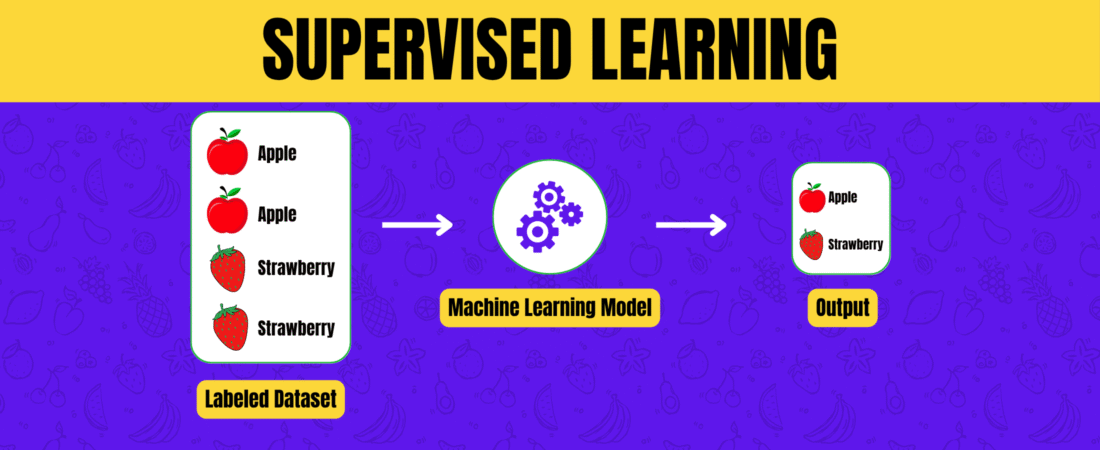In today digital world, a machine can recognize your voice, recommend your next movie, or even help to diagnose diseases. But have you ever wondered how they got so smart. The answer often lies in a powerful technique called supervised learning.
What is supervised learning ?
Supervised learning is a type of machine learning that uses a labeled dataset — which means the data includes both the input and the correct answer. It’s a lot like how students learn from a teacher.
Imagine a teacher helping students recognize different fruits. The teacher shows a picture of an apple and says, “This is an apple.” Then shows a banana and says, “This is a banana.” The students watch, listen, and slowly learn to tell the difference. In the same way, a supervised learning model learns by following examples and figuring out how to make the right decisions based on what it was shown.
How does it work ?
Just like a teacher helps students recognize fruits by showing them pictures (inputs) and telling them the names (correct answers), we also teach computers using supervised learning with labeled datasets. These datasets include both the input features and the correct output labels.
For example, imagine we want to teach a computer how to recognize different types of trees. We give it a dataset with images of trees (input features) and the names of each tree (output labels). The computer then looks at things like the color, shape, and size of the trees, and starts learning how to tell them apart based on these patterns.
Basically, it tries to learn the relationship between the inputs (features) and the correct answers (output labels). Once it has learned this, it can make predictions on new, unseen data — even if it hasn’t seen those specific trees before.
Types of Supervised learning
Supervised learning mainly divided into two categories: regression and classification.
Regression
Regression algorithms are mainly used to predict ( output ) continuous or real numerical values.
For example, imagine you want to predict the price of a house based on its size. To build this kind of model, you can create a dataset that includes the size of houses (input or feature) and their corresponding selling prices (output or target). This data is then fed into a regression algorithm. As it learns, the model starts to understand how the price changes with size, and finds the pattern between the input (house size) and the output (price). Once trained, the model can then predict the price of a new house — even if it hasn’t seen that exact size before.
Another common example of a regression algorithm is predicting salary based on work experience. When training the model, you provide work experience data, such as the length of working time, industry, location, and other relevant details as the input features. The corresponding salary as the output label (target) for each given examples. During training, the algorithm learns the pattern between work experience and salary. Once it finishes learning, it creates a model that can be used to predict the average salary based on a person’s work experience.
Classification
classification algorithms are used to group data by predicting categorical data based on the input data.
A common example of classification is the spam filter in your email inbox. In this case, a model is trained to predict whether an email is spam or not spam, using a dataset that contains labeled examples of both spam and legitimate emails. The algorithm extracts useful information from each email — such as the sender, subject line, and email content, and uses these features along with their labels (spam or not) to learn the pattern between inputs and outputs. After training, the model can analyze a new email and assign a score that indicates whether your email a spam or a real.
Conclusion
Supervised learning is like giving machines a detailed instruction manual with answers. With the right data, the right algorithms, and proper training, it can unlock powerful possibilities — from smarter apps to life-saving technologies.

